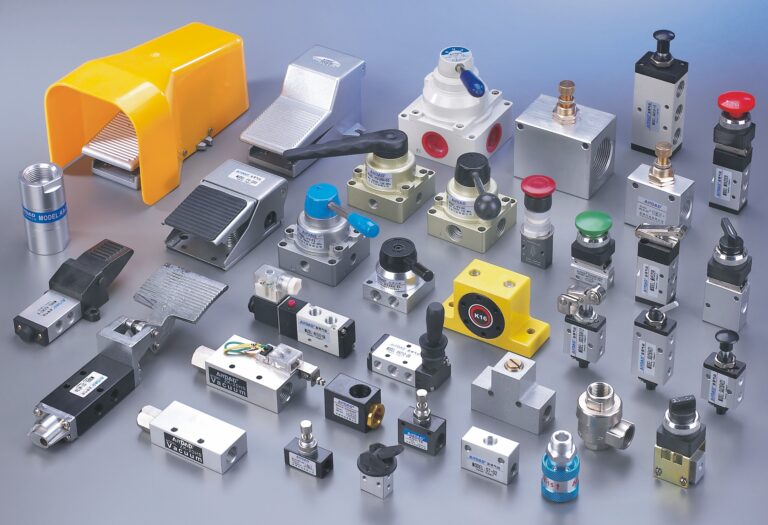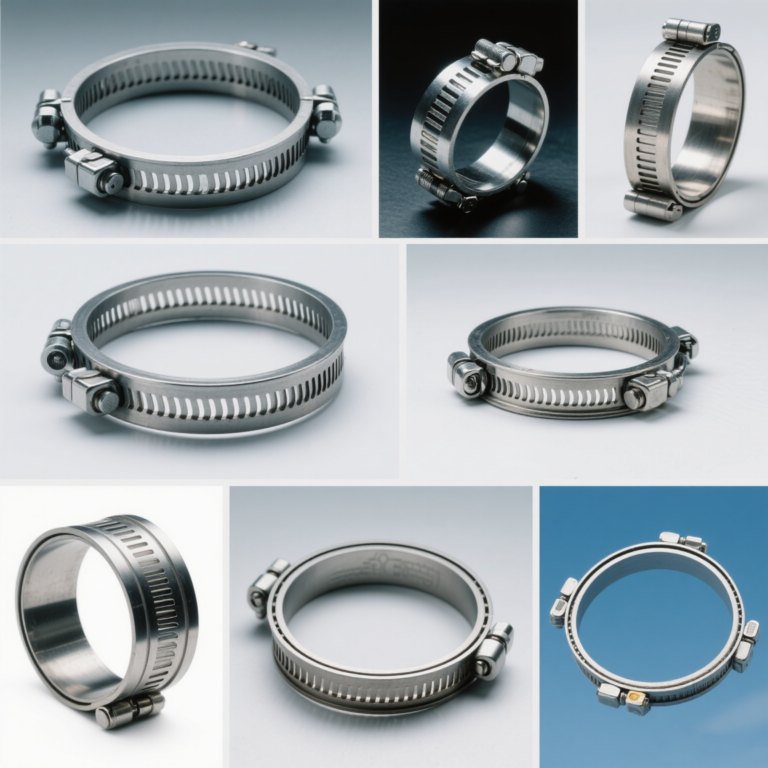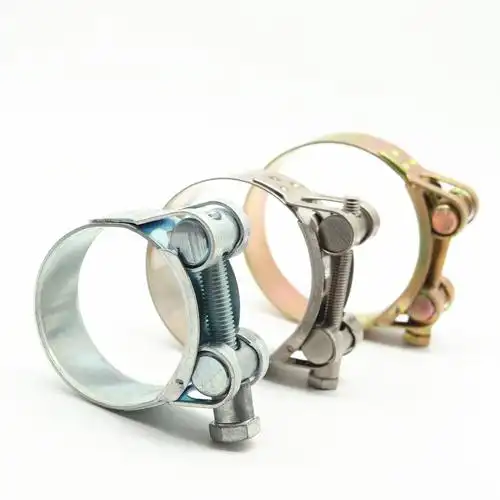Hose clamp forradiator functions, types, problems and solutions
In automotive cooling systems and many industrial cooling equipment,Hose clamp forradiator are small but vital components that play an integral…
In automotive cooling systems and many industrial cooling equipment,Hose clamp forradiator are small but vital components that play an integral role in maintaining the proper functioning of your cooling system, preventing coolant leaks, and ensuring the overall performance of your equipment.

1. The basic functions of hose clamp forradiator
The main function of the hose clamp forradiator is to provide a stable and reliable clamping force at the connection between the radiator hose and related connecting parts (such as radiator, water pump, engine block, etc.). The purpose is to form a tight seal to ensure that the coolant will not leak during the circulation process. During engine operation, the coolant continues to flow in the cooling system and experiences changes in temperature and pressure. When the temperature rises, the coolant will expand; and when the vehicle’s driving state changes (such as acceleration, deceleration, climbing, etc.), the system pressure will also fluctuate. At this time, the hose clamp must be able to adapt to these changes and always maintain sufficient clamping force to prevent coolant from leaking out.
In addition, the hose clamp also plays a role in suppressing the vibration and displacement of the hose. Due to the operation of the engine and the bumps of the vehicle during driving, the radiator hose will inevitably shake. Without effective fixation, excessive vibration may cause the hose to wear, fatigue or even rupture. The hose clamp tightly restrains the hose and limits its unnecessary movement, thereby extending the service life of the hose and maintaining the integrity of the entire cooling system.
2. Common types of hose clamp forradiator
1. Worm Drive Hose Clamp

This is one of the most widely used types of radiator hose clamps. It consists of a metal band and a worm drive. The metal band is usually made of stainless steel, which gives it good corrosion resistance and high strength, making it suitable for a variety of working environments. The worm drive allows the user to precisely adjust the clamping degree of the metal band by rotating the worm.
Its working principle is relatively intuitive. When the worm is turned, the metal band will tighten or loosen accordingly, so as to adapt to different diameter hoses and different installation requirements. During the installation process, the operator can flexibly adjust the clamping force according to the actual situation to ensure the ideal sealing effect. Due to its relatively simple structure and low manufacturing cost, it can be found everywhere on the radiators of cars, motorcycles and many industrial equipment.
However, worm drive hose clamps are not without flaws. During long-term use, especially in harsh working conditions such as high temperature, high humidity and dust, the worm drive is prone to rust and jamming, which leads to unstable or difficult to adjust the clamping force. In addition, if it is over-tightened during installation, it may cause damage to the hose; if it is not tightened enough, it will cause leakage risk.
2.Spring loaded hose clamp

Spring hose clamps consist of a metal spring ring and two connecting lugs. The spring ring provides a constant and stable clamping force based on the elasticity of the spring and can automatically adapt to changes in hose diameter within a certain range. The connecting lugs are usually used to fix the hose clamp in a specific position or connect it to other components.
The significant advantage of this type of hose clamp is its adaptability. During engine operation, as the coolant temperature changes, the hose diameter will expand or contract slightly. The spring hose clamp can keenly sense these changes and automatically adjust the clamping force to always maintain the seal without frequent manual intervention. For this reason, it is very popular in some cooling systems that require high stability, such as high-performance engines or large industrial cooling equipment.
However, the clamping force of the spring hose clamp is relatively fixed and cannot be adjusted manually as accurately as the worm drive type. Moreover, if the spring quality is poor or fatigue occurs after long-term use, its clamping force may gradually weaken, which will have an adverse effect on the sealing performance. In addition, special attention should be paid to whether the spring ring is positioned correctly during installation, otherwise it may cause uneven sealing or leakage.
3.Ear hose clamp

The ear hose clamp is usually stamped from a sheet of metal and is shaped like an ear, hence the name. It generally has one or more ear pieces, which are bent to clamp the hose. The ear-shaped clamp has a relatively simple design and low manufacturing cost. It is mainly used in some occasions where cost control is strict and the clamping force requirements are not particularly strict, such as the cooling system of small household equipment or simple industrial cooling devices.
Its installation process is relatively convenient, and you only need to bend the ear piece to the appropriate position with the help of tools. However, due to its structural characteristics, the ear-shaped clamp is difficult to adjust once it is installed. If the clamping force is found to be insufficient or excessive during the installation process, it is extremely difficult to correct it. In addition, the clamping force of the ear-shaped clamp is relatively weak, and its sealing performance is difficult to guarantee under high pressure or high vibration environment, which is prone to coolant leakage.
4.T-Bolt Hose Clamp

The T-bolt hose clamp is a heavier type of hose clamp, suitable for large diameter hoses or radiator systems working under high pressure. It mainly consists of a wide and thick metal strip, a T-bolt and a nut. The metal strip can withstand high pressure, and the T-bolt and nut work together to provide a strong clamping force.
The outstanding advantage of this hose clamp is that it can provide extremely high clamping force, which effectively ensures the sealing reliability under high pressure. In some large industrial cooling systems, such as cooling equipment in power plants and chemical plants, or engine radiators of large ships and engineering machinery, T-bolt hose clamps can effectively prevent coolant leakage and ensure the safe and stable operation of the system.
However, the structure of the T-bolt hose clamp is relatively complex, and the installation and removal process requires the use of special tools, which is cumbersome to operate. Moreover, due to its own weight and large size, it may be restricted in some installation environments with limited space. In addition, its relatively high manufacturing cost limits its application in small equipment or cost-sensitive projects.
3. Material selection of hose clamp forradiator
The material selection of the hose clamp forradiator is directly related to its performance, durability and reliability. Common materials include stainless steel, galvanized steel and plastic.
Stainless steel is one of the ideal materials for hose clamp forradiator and is widely used in various occasions. It has excellent corrosion resistance and can be used for a long time in harsh environments with humidity, high temperature and the presence of chemicals without rusting or corroding. At the same time, stainless steel has high strength and can provide stable and reliable clamping force, and its good elasticity and toughness enable it to adapt to a certain degree of deformation without breaking. Different grades of stainless steel, such as 304 stainless steel and 316 stainless steel, have slight differences in corrosion resistance and strength, which can be reasonably selected according to specific application requirements.
Galvanized steel is also one of the commonly used materials. The presence of the zinc coating improves the corrosion resistance of the steel to a certain extent, making it suitable for some occasions with certain cost requirements and relatively good working environment. However, compared with stainless steel, the corrosion resistance of galvanized steel is relatively weak. After long-term exposure to harsh environments, the zinc coating may gradually wear or corrode, thereby affecting the service life of the hose clamp.
Plastic hose clamps are mainly used in some small cooling systems with strict requirements on weight and cost and low working pressure, such as cooling modules of some electronic equipment. Plastic materials have the advantages of light weight, low cost and good insulation, but they perform poorly in terms of strength and temperature resistance. Generally speaking, the operating temperature range of plastic hose clamps is relatively limited, and they are easy to soften or deform in high temperature environments, resulting in loss of clamping force and sealing failure.
4. Problems and solutions of hose clamp forradiator
1.Leakage issues
1. Problem manifestation
Coolant leaks from the connection between the hose clamp and the hose, which may cause the coolant level to drop, affecting the normal heat dissipation function of the cooling system, and in severe cases may cause the engine to overheat or even damage.
2. Cause analysis
Insufficient clamping force of the hose clamp: It may be because the hose clamp is not tightened in place when installed, or the clamping force is loosened due to vibration during use. For example, the worm of the worm-driven hose clamp loosens under long-term vibration, and the spring of the spring-driven hose clamp loses some elasticity due to fatigue.
Hose surface damage: The hose may have defects such as scratches and wear before installation, or it may be damaged by friction with other parts during use, which may cause leakage even if the hose clamp works normally.
Hose clamp does not match the hose: The selected hose clamp is too large and cannot fit the hose tightly, or the type of hose clamp is not suitable for specific working environment and pressure requirements.
3. Solution
Check and readjust the clamping force: For worm-driven hose clamps, use tools such as screwdrivers to properly rotate the worm to increase the clamping force, and pay attention to the deformation of the hose to avoid over-tightening. For spring hose clamps, if the spring is fatigued, it should be replaced in time.
Check the hose surface: If the hose is found to be damaged, replace it with a new one and ensure that it is not damaged again during installation. During installation, a small amount of lubricant can be applied to the contact area between the hose and the connecting parts to reduce friction.
Replace the appropriate hose clamp: Select the correct size and type of hose clamp according to the hose diameter, working pressure and environmental conditions. For example, for large-diameter hoses in high-pressure environments, T-bolt hose clamps should be used; for hoses with a certain diameter change and requiring adaptability, spring hose clamps can be selected.
2.Rust and Corrosion Problems
1. Problem manifestation
Rust appears on the surface of the hose clamp, especially for metal hose clamps. Rust may weaken the clamping force, affect the sealing performance, and also reduce the service life of the hose clamp.
2. Cause analysis
The working environment is humid or corrosive substances exist: for example, in the engine compartment of a car, coolant may splash out, which contains some chemical components, or in an industrial environment, there are corrosive gases or liquids such as acids and alkalis.
Improper material selection: If a hose clamp made of galvanized steel is selected, the galvanized layer may be damaged in a harsh environment, exposing the internal steel to corrosive substances.
3. Solution
Cleaning and protection: Clean the hose clamp regularly to remove rust and impurities on the surface. Rust remover can be used to treat slight rust, and then anti-rust oil or anti-corrosion paint can be applied to form a protective film to prevent further rust.
Replacement of materials: For hose clamps that have been in harsh corrosive environments for a long time, consider replacing them with stainless steel hose clamps to improve their corrosion resistance.
3.Installation and adjustment difficulties
1. Problem manifestation
When installing the hose clamp, it is difficult to place it correctly on the hose, or when adjusting the clamping force, such as the worm of the worm drive hose clamp is difficult to turn, and the bolt of the T-bolt hose clamp is difficult to tighten.
2. Cause analysis
Space limitation: In the layout of some equipment, the space around the radiator is small, making it difficult to operate the tools and install or adjust the hose clamp smoothly.
Failure of the hose clamp itself: For example, the worm of the worm drive hose clamp may not be able to turn due to rust, deformation or impurities stuck; the thread of the T-bolt hose clamp may be damaged.
3. Solution
Optimize the installation sequence and tool selection: Before installation, carefully plan the installation sequence and install the hose clamps in the more difficult to operate positions first. Choose suitable tools, such as small, flexible screwdrivers or wrenches. For extremely limited space, special socket wrenches or pneumatic tools can be used.
Repair or replace the hose clamp: If the hose clamp itself is faulty and makes installation and adjustment difficult, for worm-driven hose clamps, try to clean the rust and impurities on the worm. If the worm is deformed, it needs to be replaced. For T-bolt hose clamps, check whether the thread is damaged. If necessary, repair or replace the hose clamp with a new one.
Hose clamp forradiator play a vital role in the cooling system. Understanding their functions, types, material selection, possible problems and solutions is extremely important to ensure the efficient and stable operation of the cooling system. Whether it is an automobile repairman, an industrial equipment maintenance engineer or an ordinary equipment user, they should pay attention to the correct use and maintenance of radiator hose clamps to ensure the normal operation of the equipment and extend its service life.
Questions and Answers
Question 1
How to determine whether the hose clamp forradiator needs to be replaced?
Answer: If the hose clamp surface is found to be severely rusted or corroded, resulting in a significant weakening of the clamping force, such as signs of coolant leakage; or the spring, worm and other adjustment parts of the hose clamp are damaged and cannot work properly; and if the hose clamp is found to be deformed or broken during the inspection, then you need to consider replacing the radiator hose clamp. In addition, when the cooling system is upgraded and modified, different specifications of hoses are replaced or it is operated under higher pressure, the original hose clamp may no longer be applicable and needs to be replaced with a suitable model.
Question 2
Is there a specific torque requirement when installing hose clamp forradiator?
Answer: For some specific types of hose clamps, such as T-bolt hose clamps, there are usually torque requirements. The torque values of T-bolt hose clamps for different specifications and application scenarios are different. Generally speaking, the manufacturer will provide the corresponding torque data in the product manual or technical documentation. During installation, a torque wrench should be used to tighten according to the specified torque value to ensure that the clamping force is sufficient without damaging the hose or hose clamp due to over-tightening. For worm drive hose clamps, although there is no precise torque value, you should pay attention to the deformation of the hose when tightening to achieve a suitable sealing effect without damaging the hose.
Question 3
What are plastic hose clamp forradiator suitable for?
Answer: Plastic radiator hose clamps are mainly suitable for small, low-pressure cooling systems, such as cooling modules of some electronic equipment and cooling circuits of small household appliances (such as some computer radiators, small fan radiators, etc.). Because these scenarios have lower requirements for coolant pressure, and plastic hose clamps have the advantages of light weight, low cost, and good insulation, they can meet basic sealing and fixing requirements, while helping to reduce the weight and cost of the overall equipment. However, it should be noted that plastic hose clamps have poor temperature resistance and cannot be used in high temperature environments, otherwise they will soften and deform, resulting in sealing failure.







